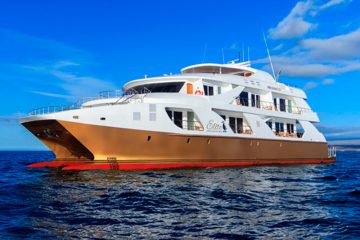DAY 1 – THURSDAY: BALTRA AIRPORT
Sea Star Journey C+A itinerary
Upon arrival at Baltra Airport, travelers pass through an airport inspection point to insure that no foreign plants or animals get in into the islands, as well as to pay the park entrance fee of $100 (unless it has been prepaid). A representative of our Galapagos Sea Star Journey I, will meet you, help you collect your luggage, and escort you bus ride to Puerto Ayora Village and then embark on board our yacht
PM: CHARLES DARWIN STATION, SANTA CRUZ ISLAND
Although the great majority of Galapagos visitors come here to observe and appreciate natural wonders, you can also lear how is manage the protection and conservation of the islands. The main attractions are the National Park information center, the Van Staelen Exhibition Hall, the Breeding and Rearing Center for young tortoises and adult Galapagos tortoises in captivity.










 WhatsApp us
WhatsApp us